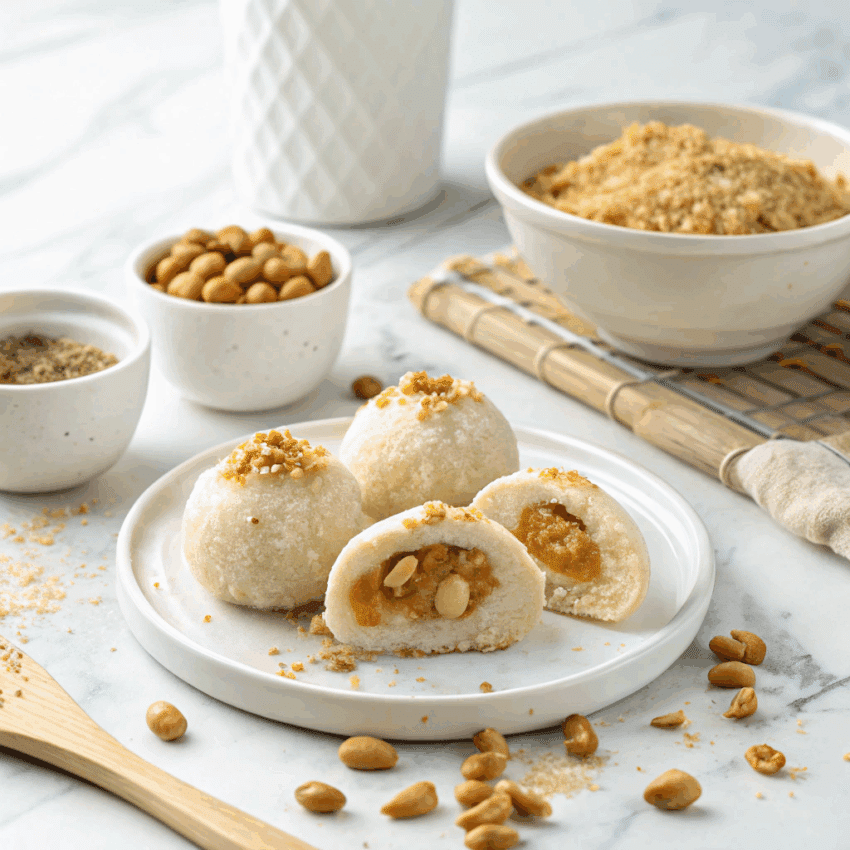Ever bite into something and feel like you’re wrapped in a warm hug? That’s tang yuan. These soft, chewy glutinous rice balls—filled with nutty black sesame or creamy peanut—swim in a lightly sweet ginger syrup. It’s not just dessert. It’s comfort, history, and joy rolled into one.
I first tried tang yuan in a tiny family-run eatery during Lantern Festival in Shanghai. I was hooked after one spoonful. Back home, I had to recreate them—failures and sticky hands included—until I nailed the texture, flavor, and bounce. And now? I’m sharing it all with you.
What Is Tang Yuan?
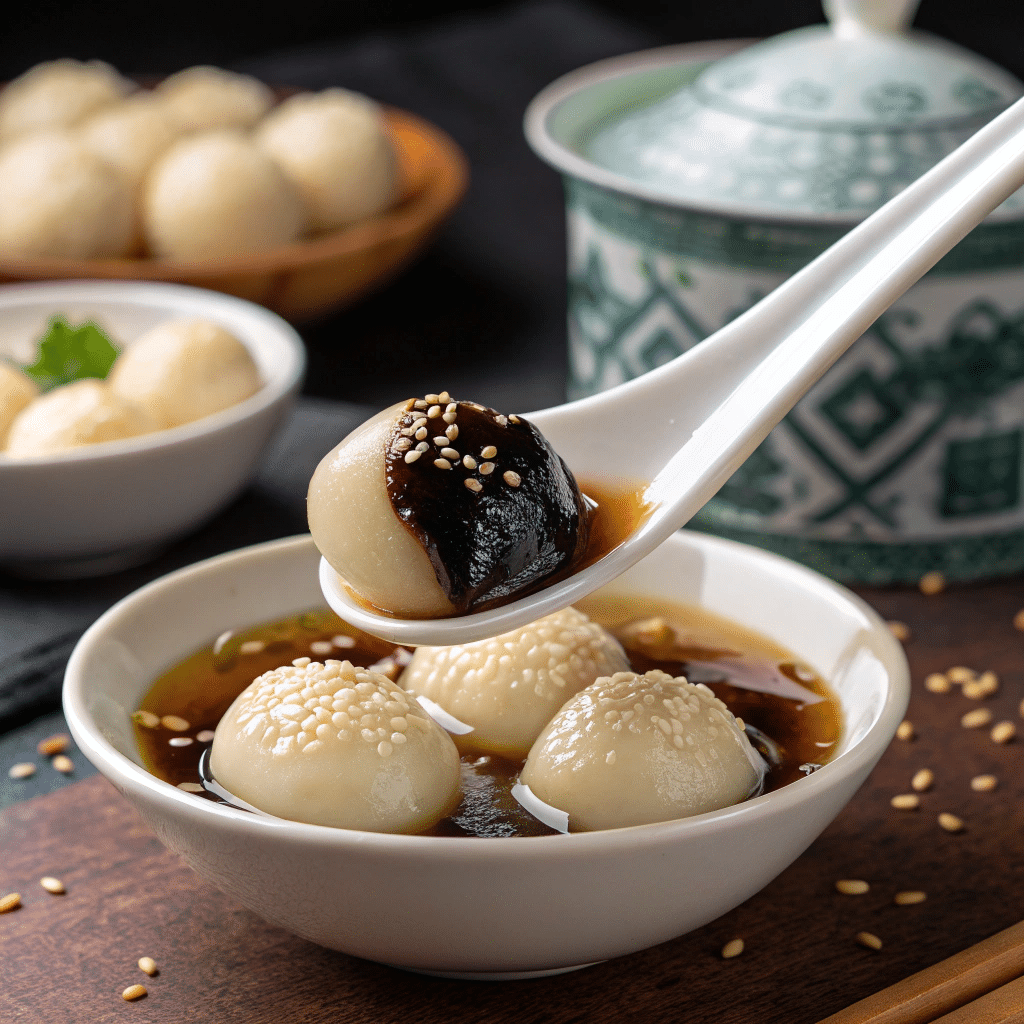
Tang yuan, pronounced “tahng-ywen,” literally means “soup round.” Fitting, right? They’re chewy rice balls usually filled with something rich and flavorful—black sesame paste, peanut butter, red bean paste—and served in a sweet (sometimes savory) broth.
They’re most commonly eaten during Lunar New Year, Lantern Festival, or weddings. Why? Because round shapes symbolize unity and family togetherness in Chinese culture. A bowl of tang yuan? That’s a bowl of blessings.
Ingredients You’ll Need
Tang yuan keeps it simple. Just a few key components, but trust me—they each pull their weight.
For the Dough:
- 1 cup glutinous rice flour (not regular rice flour)
- About ½ cup warm water (adjust as needed)
- Food coloring (optional, if you want to make it festive)
For the Black Sesame Filling:
- ½ cup roasted black sesame seeds
- 2 tablespoons sugar
- 3 tablespoons unsalted butter or coconut oil
Want peanut instead? Swap in creamy peanut butter mixed with a touch of powdered sugar and a pinch of salt.
For the Ginger Syrup:
- 4 cups water
- ½ cup brown sugar (or rock sugar)
- 3–4 slices of fresh ginger
Simple, but the combo is magical.
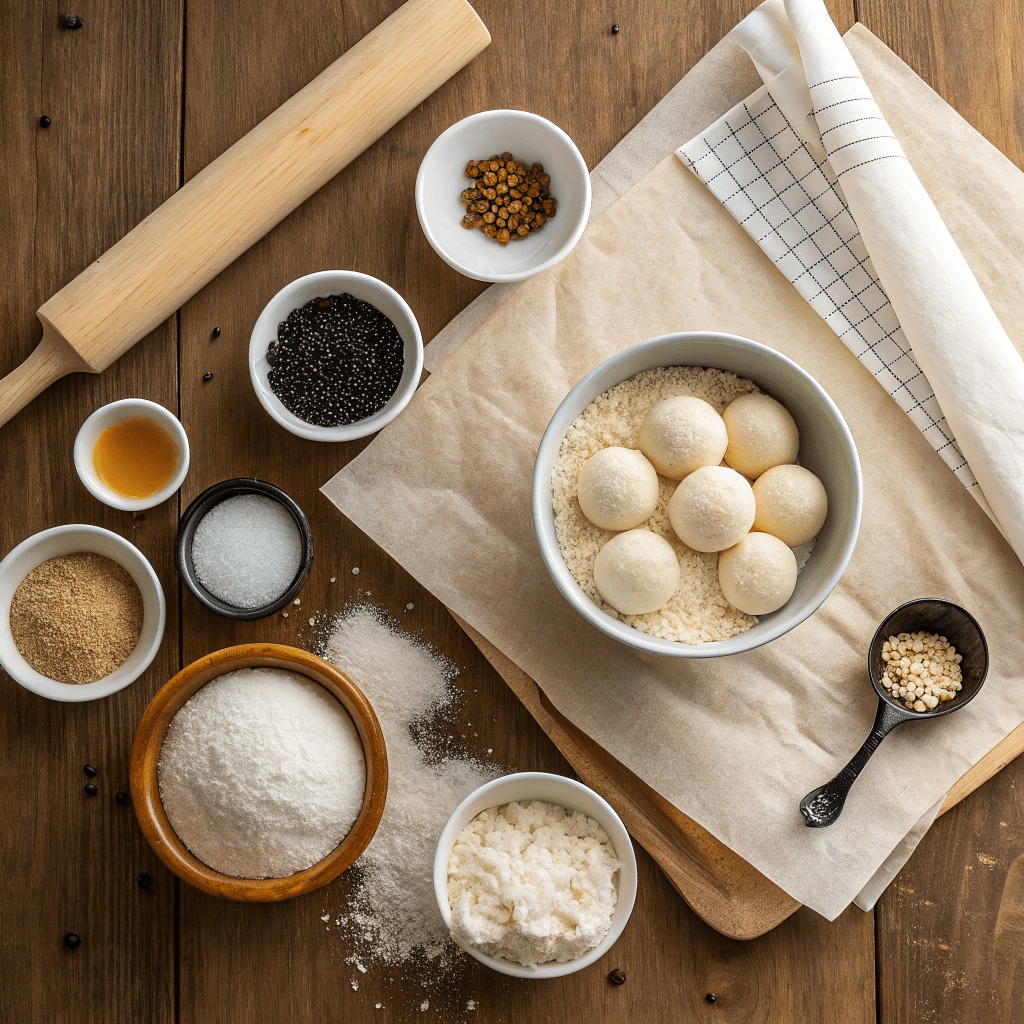
Step-by-Step: How to Make Tang Yuan
No need to be a pastry chef. If you’ve got hands and a little patience, you can do this. Here’s how.
Step 1: Make the Filling
Grind roasted black sesame seeds in a food processor until they’re fine, almost powdery. Add sugar and melted butter. Keep pulsing until it turns into a thick, scoopable paste.
Scoop out ½ teaspoon portions and roll them into small balls. Pop them in the freezer to firm up while you prep the dough.
Step 2: Make the Dough
Place glutinous rice flour in a bowl. Gradually add warm water, mixing as you go. Use your hand to knead until a soft, pliable dough forms—not sticky, not crumbly. Think Play-Doh, but tastier.
Cover with a damp cloth so it doesn’t dry out.
Step 3: Assemble the Tang Yuan
Pinch off a piece of dough about the size of a ping-pong ball. Flatten it into a small disc. Place a frozen filling ball in the center, then wrap the dough around it and seal tightly. Roll gently between your palms to smooth it out.
Pro tip: Keep your fingers dry and your fillings frozen. It makes life a whole lot easier.
No filling? You can also make plain rice balls and serve them as-is for a lighter dessert.
Step 4: Cook the Balls
Bring a pot of water to a gentle boil. Drop in the tang yuan. They’ll sink at first. Once they float, let them cook for another 2–3 minutes.
Remove with a slotted spoon and drop straight into the ginger syrup.
Step 5: Simmer the Sweet Soup
In another pot, combine water, sugar, and ginger slices. Bring it to a boil, then simmer for 10–15 minutes until fragrant.
Add the cooked rice balls and let them soak in that warm, spicy bath.
Serve hot. Slurp encouraged.
Variations You’ll Love
The beauty of tang yuan? It’s flexible.
Savory Tang Yuan
Yes, savory. Picture rice balls filled with minced pork, mushrooms, or pickled veggies, served in a clear broth. A total flavor curveball.
Vegan Peanut Tang Yuan
Swap butter for coconut oil and use plant-based peanut butter. Still indulgent, totally dairy-free.
Festive Versions
Dye the dough with natural food coloring—pink beet juice, green matcha, yellow turmeric—and create rainbow bowls that scream celebration.
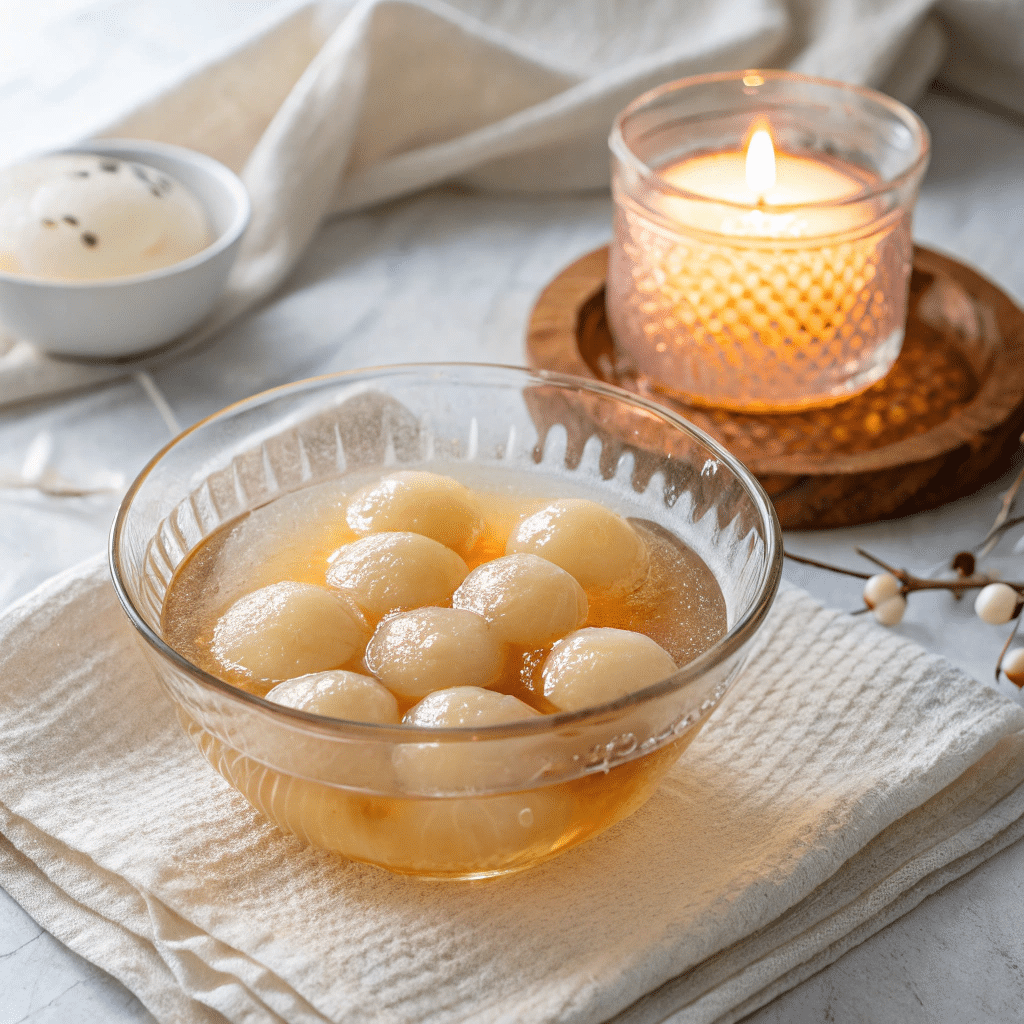
Tips for Trying Tang Yuan at Home
- Use Fresh Glutinous Rice Flour – This stuff goes stale fast. If the dough feels off, toss it and grab a new bag.
- Don’t Overfill the Balls – I’ve done it. They’ll split like a busted balloon. Keep the filling small and center it well.
- Pinch and Roll Carefully – If you leave cracks, water will sneak in and ruin the texture. Treat them like delicate dumplings.
- Taste the Ginger Syrup – Too sweet? Add water. Too bland? Add another ginger slice. You’re not locked in.
- Double the Batch and Freeze – Future you will thank you. These go straight from freezer to boiling pot in minutes.
- Hosting? Serve in Clear Bowls – Tang yuan is gorgeous. Let people see those pillowy orbs floating like soft moons in syrup.
Final Thoughts
Tang yuan might look simple, but there’s soul in every bite. It’s not just a Chinese dessert—it’s a story. Of family, tradition, and warmth. And now, with a little flour and some elbow grease, it’s yours to enjoy too.
Whether you’re making sweet soup for a winter night or colorful rice balls for a festival, this recipe will stick with you. Literally. (Wash your hands after.)
So grab your glutinous rice flour and let’s get rolling. You’ve got a batch of joy waiting to be made.
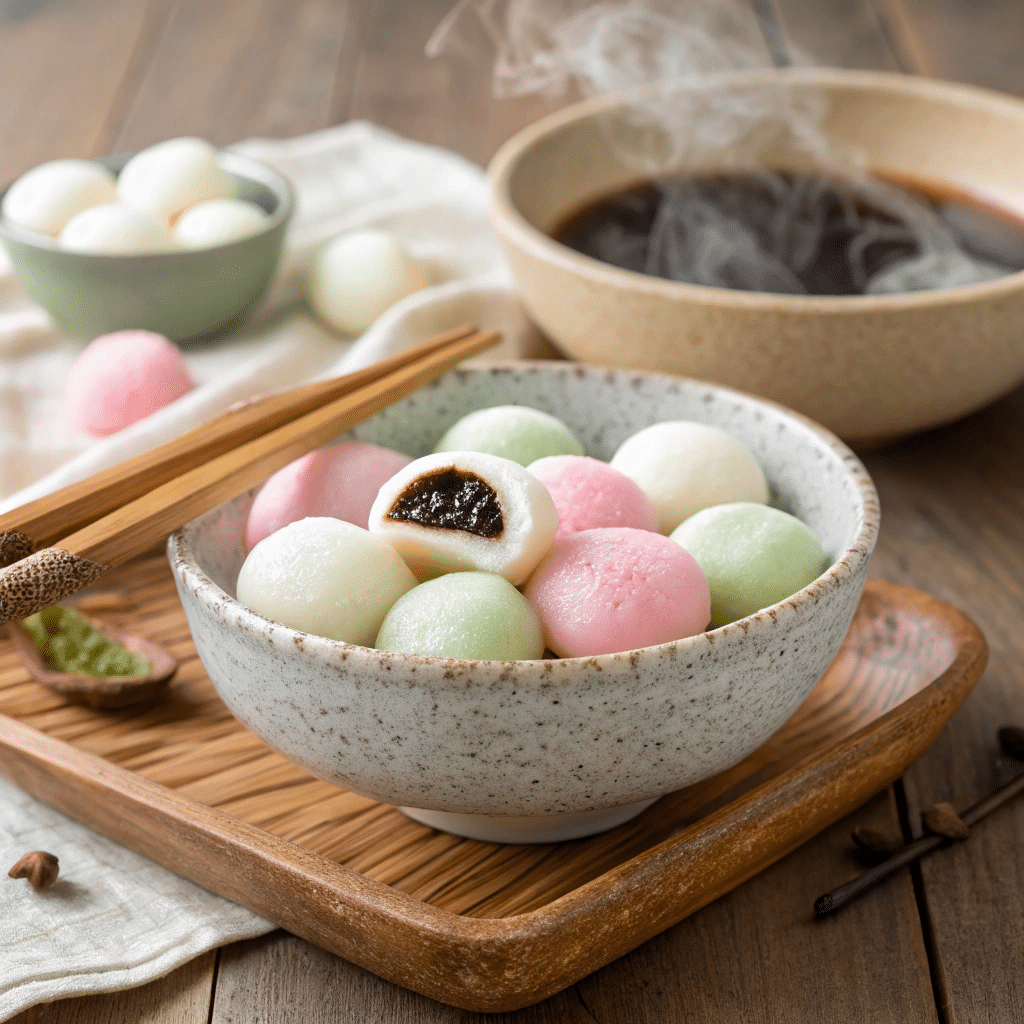
Tang Yuan (Glutinous Rice Balls with Black Sesame Filling)
Ingredients
Method
- Blend sesame seeds in a food processor until finely ground.
- Add sugar and melted butter; pulse into a thick paste.
- Roll into tiny balls (about ½ teaspoon each) and freeze until firm.
- Place glutinous rice flour in a bowl.
- Slowly pour in warm water while mixing with your hands.
- Knead into a soft, smooth dough—like Play-Doh.
- Cover with a damp cloth to prevent drying.
- Take a small piece of dough and flatten it into a disc.
- Place a frozen filling ball in the center.
- Gently wrap and seal the dough around it.
- Roll it into a smooth ball using your palms.
- Boil a pot of water.
- Drop in the balls—they’ll sink at first.
- Once they float, let them cook for another 2–3 minutes.
- Remove with a slotted spoon.
- In a separate pot, combine water, sugar, and ginger slices.
- Bring to a boil, then simmer for 10–15 minutes.
- Add cooked tang yuan to the syrup and let them soak.
- Ladle into bowls with syrup and serve warm.
Notes
- Use only glutinous rice flour—not regular rice flour. That chewiness depends on it.
- Don’t overfill the dough or it’ll crack during cooking.
- Leftover tang yuan can be frozen raw and cooked straight from the freezer.
- You can skip the filling if you want a simpler version. Just roll and boil the dough balls.
Frequently Asked Questions About Tang Yuan
Q: What’s the difference between tang yuan and mochi?
Both use glutinous rice, but tang yuan is boiled and served in soup, while mochi is steamed or pounded and often eaten dry or with powdered coatings. Texture-wise, tang yuan is silkier and more delicate.
Q: Can I make tang yuan ahead of time?
Totally. Shape and freeze the raw balls on a tray, then store them in a zip-top bag. Boil straight from frozen—no thawing needed.
Q: Is glutinous rice flour the same as regular rice flour?
Nope. Glutinous rice flour comes from sticky rice and gives that signature chew. Regular rice flour won’t work here—it’ll fall apart or go crumbly.
Q: Why did my tang yuan crack while boiling?
Usually it means the dough was too dry or the seal wasn’t tight enough. Make sure the dough is smooth and pliable, and fully enclose the filling.
Q: Can I use other fillings?
Absolutely. Try red bean paste, lotus seed paste, sweetened taro, or even Nutella (I won’t tell anyone).
Q: What does tang yuan taste like?
A good tang yuan is soft on the outside, nutty or creamy inside, and swimming in a syrup that’s just sweet enough with a ginger kick. Think of it as dessert dumplings, but better.

